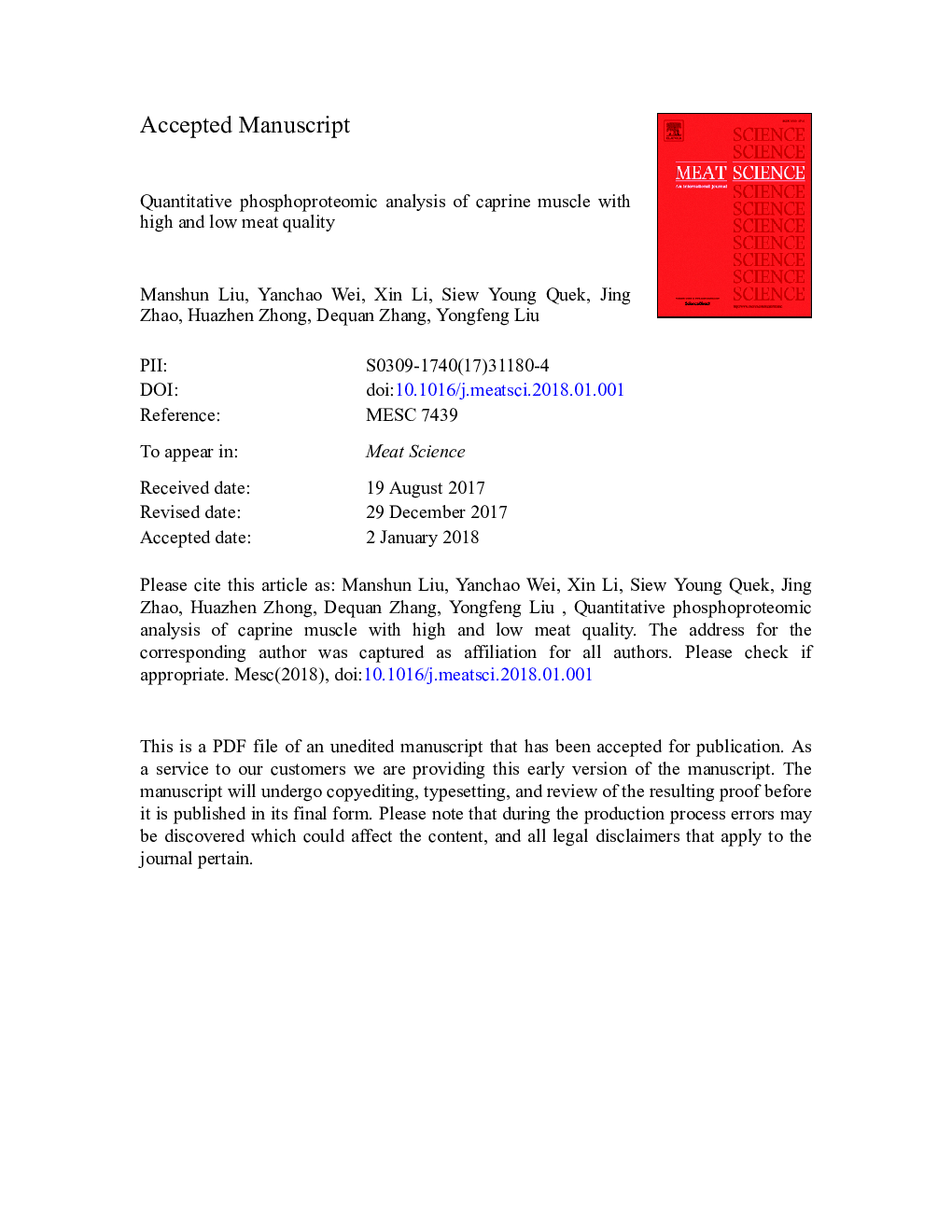| Article ID | Journal | Published Year | Pages | File Type |
|---|---|---|---|---|
| 8502787 | Meat Science | 2018 | 24 Pages |
Abstract
During the conversion of muscle to meat, protein phosphorylation can regulate various biological processes that have important effects on meat quality. To investigate the phosphorylation pattern of protein on rigor mortis, goat longissimus thoracis and external intercostals were classified into two groups (high quality and low quality), and meat quality was evaluated according to meat quality attributes (Warner-Bratzler shear force, Color, pH and drip loss). A quantitative mass spectrometry-based phosphoproteomic study was conducted to analyze the caprine muscle at 12Â h postmortem applying the TiO2-SIMAC-HILIC (TiSH) phosphopeptide enrichment strategy. A total of 2125 phosphopeptides were identified from 750 phosphoproteins. Among them, 96 proteins had differed in phosphorylation levels. The majority of these proteins are involved in glucose metabolism and muscle contraction. The differential phosphorylation level of proteins (PFK, MYL2 and HSP27) in two groups may be the crucial factors of regulating muscle rigor mortis. This study provides a comprehensive view for the phosphorylation status of caprine muscle at rigor mortis, it also gives a better understanding of the regulation of protein phosphorylation on various biological processes that affect the final meat quality attributes.
Keywords
Related Topics
Life Sciences
Agricultural and Biological Sciences
Food Science
Authors
Manshun Liu, Yanchao Wei, Xin Li, Siew Young Quek, Jing Zhao, Huazhen Zhong, Dequan Zhang, Yongfeng Liu,
